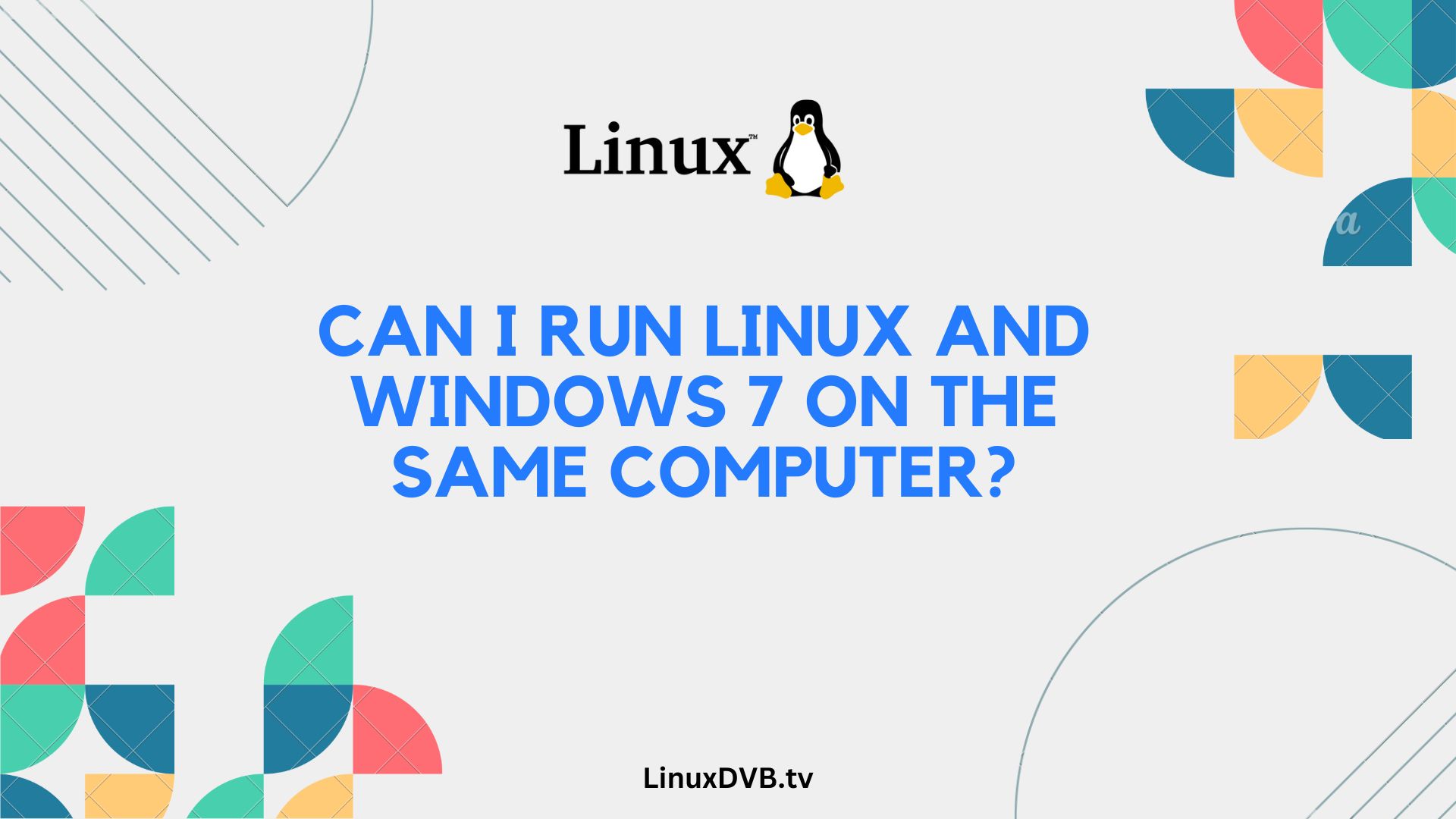In today’s tech-savvy world, the idea of running two different operating systems on a single computer can be intriguing and beneficial. You might have heard about dual-booting, which allows you to have both Linux and Windows 7 on your PC. But is it really possible, and how can you make it work seamlessly? In this detailed guide, we’ll explore this exciting topic and provide you with all the information you need to embark on this adventure.
Table of Contents
Introduction
Dual-booting Linux and Windows 7 on the same computer opens up a world of possibilities. Whether you want to explore Linux for its open-source goodness or need to keep Windows 7 for compatibility reasons, this guide will walk you through the entire process. We’ll cover essential steps, tips, and potential challenges, ensuring you can make the most of this dual-boot setup.
Getting Started with Dual-Booting
To get started, you’ll need to follow a carefully planned process. Here are the key steps:
Preparing Your Computer
Before diving into the dual-booting process, it’s crucial to ensure your computer is ready for the task. This includes:
- Checking Hardware Compatibility: Ensure that your hardware can support both Linux and Windows 7.
- Back Up Your Data: Create backups of your important data to prevent any potential data loss during installation.
- Download Necessary Files: Download the Linux distribution and Windows 7 ISO files.
Installing Linux
Now, let’s explore the process of installing Linux alongside Windows 7:
Partitioning Your Hard Drive
Before installing Linux, you’ll need to partition your hard drive to allocate space for the new operating system.
Creating a Bootable USB
To install Linux, you’ll need a bootable USB drive. Learn how to create one here.
Installing Linux
Follow a step-by-step guide to install your chosen Linux distribution on the newly created partition.
Installing Windows 7
With Linux successfully installed, it’s time to tackle Windows 7:
Setting Up a Separate Partition
Learn how to create a separate partition for Windows 7 to avoid conflicts with Linux.
Installing Windows 7
Step-by-step instructions for installing Windows 7 on your computer alongside Linux.
Configuring Your Dual-Boot System
Now that both operating systems are installed, it’s essential to configure your dual-boot system:
- Choosing the Default OS: Decide whether Linux or Windows 7 will be your default operating system.
- Managing Boot Options: Learn how to access a boot menu and change your OS selection during startup.
Troubleshooting Common Issues
During your dual-boot journey, you might encounter some common issues. We’ve got you covered with troubleshooting tips:
- Bootloader Problems: Resolve bootloader issues that may prevent your computer from starting.
- Hardware Compatibility: Solutions for hardware-related problems.
FAQs
Can I run Linux and Windows 7 on the same computer?
Absolutely! With the right preparation and following our guide, you can run both Linux and Windows 7 on your computer.
What are the benefits of dual-booting?
Dual-booting allows you to enjoy the best of both worlds: the versatility of Linux and the familiarity of Windows 7.
Can I switch between operating systems easily?
Yes, you can choose your desired operating system every time you start your computer.
Will dual-booting affect my data?
Properly set up, dual-booting should not affect your data, but it’s always recommended to back up important files.
Can I remove one of the operating systems later?
Yes, you can remove an operating system from your dual-boot setup if you decide you no longer need it.
Are there other operating systems I can dual-boot with Windows 7?
Yes, you can explore dual-booting options with other Linux distributions or even newer versions of Windows.
Can I run Linux and Windows 7 on the same computer?
Yes, you can dual-boot Linux and Windows 7 on the same computer.Does Linux and Windows work together?
Linux and Windows can coexist on the same computer, but they run as separate operating systems and don’t directly collaborate in the same way as two programs on the same OS.Conclusion
Dual-booting Linux and Windows 7 is an exciting journey that opens up a world of possibilities for your computer. With the information provided in this guide, you can confidently embark on this adventure, enjoying the benefits of both operating systems without compromise.

